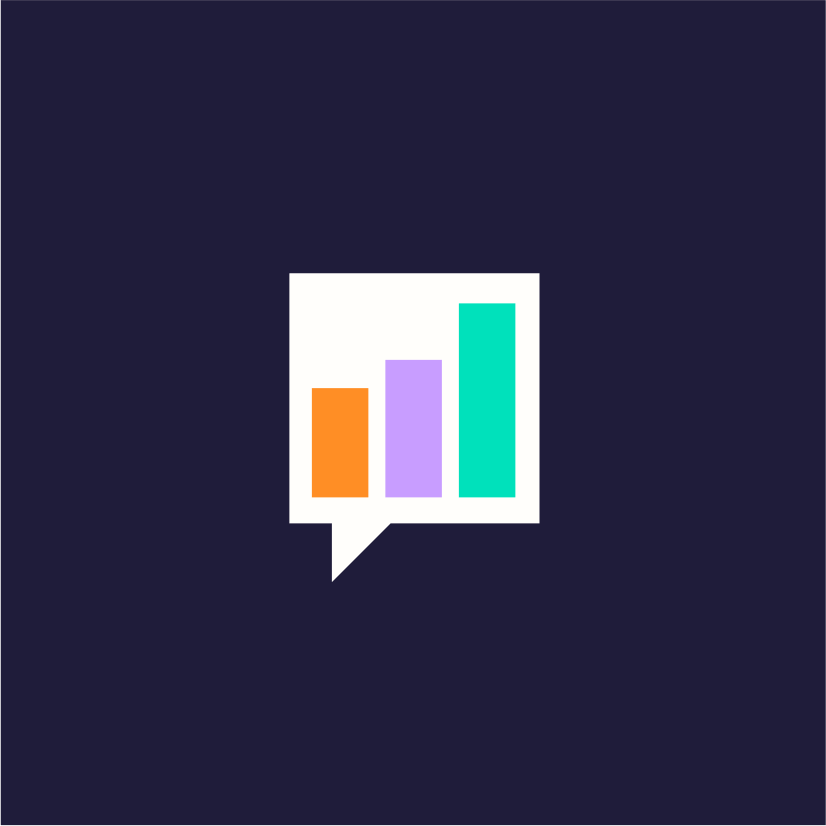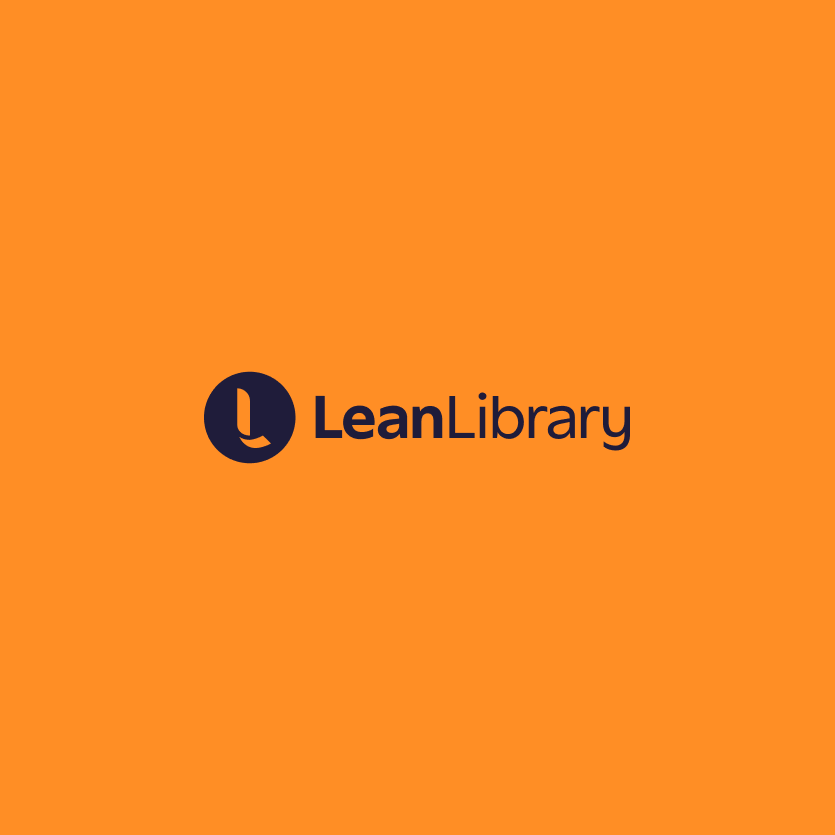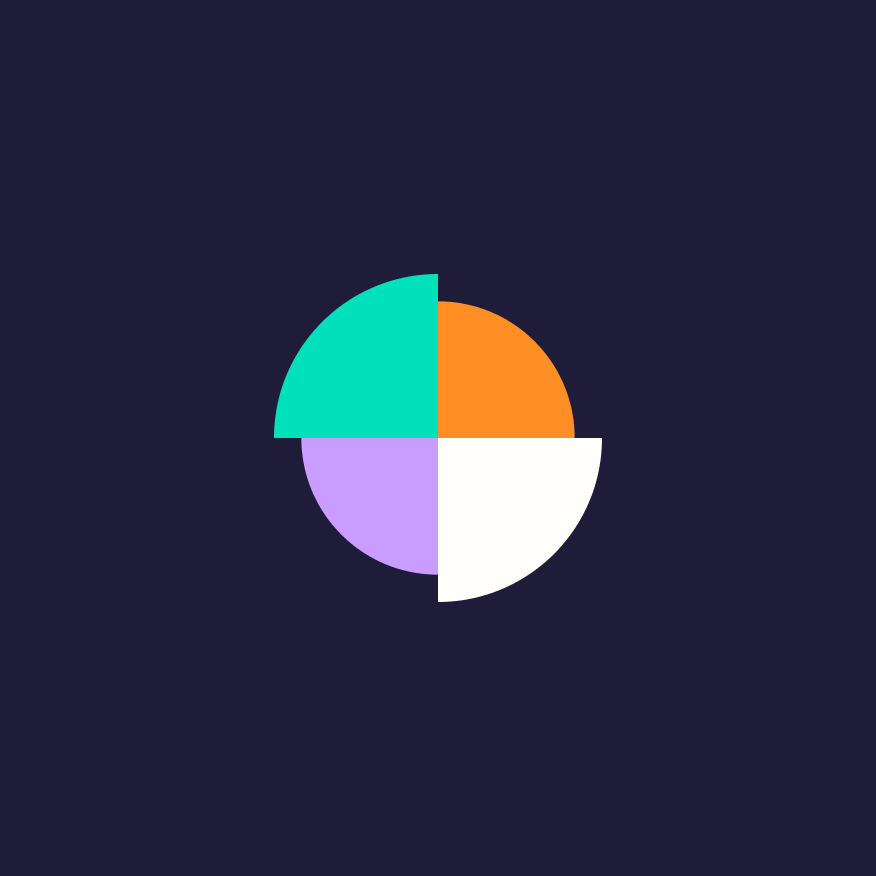We presented a session with University of Phoenix, Springshare and Sage Campus on how academic libraries can ensure that students receive the correct guidance at the point of need. As technology continues to advance, AI is making its way into various aspects of our lives, including Higher Education, with students navigating Generative AI tools such as ChatGPT themselves.
The University of Phoenix shared their experience of combining Lean Library‘s iFraming technology with Springshare’s LibGuides integration to deliver library support and guidance on AI directly into patron workflows.
Who were the speakers?
Read on to discover 8 insights about how libraries can provide students with the AI guidance they need:
1. Students are stressed with 58% of 18-34-year-olds feeling overwhelmed
A study from University of Northampton regarding an AI Special Interest Group found that students have ethical concerns regarding the use of Generative AI and are worried about implications relating to bias and accuracy. Most notably, they felt like they didn’t have the skills to use AI effectively for their studies. Talia from Springshare explained that when students need ‘live’ help with AI, they don’t want to chat with AI – they want to talk to a person! This positions the library in a unique spot where they can come in and provide contextual point of need help in the form of LibGuides, LibChat and Sage Campus.
2. 37% of librarians feel unprepared to answer student questions about AI
This research is from our latest Librarian Futures report, The Librarian Skills Landscape, which consists of global perspectives from over 2,000 academic library professionals regarding the emerging skills required to fulfil a library’s mission. This shows that librarians have an important role to play in expansion of their own knowledge of AI in academia, and ensuring students are aware of the challenges, risks and concerns around AI. How do librarians increase their knowledge of AI?
3. It’s key to put together a cross-functional team and launch a Generative AI philosophy statement
PJ Purchase at University of Phoenix emphasized establishing a cross-functional team with key stakeholders was key in setting up an AI Hub as there were varying degrees of knowledge within the library. The AI Hub is an open center which enables any member of staff within the university to up-skill. There’s training materials, documents and articles from top industry leaders which enables staff to learn more about Generative AI. Additionally, University of Phoenix decided they were going to embrace Generative AI for themselves and their students, and they needed to decide some parameters around how they thought it was going to be used.

4. Librarians need to compile materials to help support students with their AI journey
PJ Purchase explained University of Phoenix library is collating these content pieces in phases. Phase one involved writing the guidance materials, whereas phase two is to create a Learning Center through which to teach the ethical use of AI. The Learning Centre focuses on learning objectives which are woven into coursework, for example, to measure AI skills or on-demand training for upskilling. This training could lead to badging opportunities in the future. What tools can libraries use to surface their guidance in patron workflows?
5. The most desired channel for students to hear from their library is via the library homepage and where and when they need it
Research from student data within our first Librarian Futures report (2021) found that 59% students would prefer to hear from the library via their homepage, and 55% said only where and when they need it. This raises questions as to what extent the library homepage is an efficient channel when most students begin their research outside of the library on sites such as Google and Google Scholar.

6. Push library guidance to students via Lean Library and Springshare’s LibGuides
The phrase “If you build it, they will come” doesn’t really work in libraries with students not easily discovering library guidance at the point of need. How can librarians make sure they meet students where they are in their workflow? University of Phoenix utilize their library tools to combine Lean Library’s iFraming technology with Springshare’s LibGuides integration to deliver library support directly into patron workflows. This means when students are searching for research on the web, the Lean Library browser extension will lead students back to content, such as LibGuides, within the library’s collection with one click. Another use for this integration could be that when a student lands on Open.ai or ChatGPT, they’ll see a LibGuide from their library with tips for using ChatGPT ethically and generating the best research outcomes.

7. Springshare’s LibChat prompts students at the point of need to reach out to their librarian
Springshare’s LibChat integration enables librarians to create their own chatbot “flows” to guide end-users towards the answers and resources they’re looking for, before they talk to a librarian, prompting students to choose the type of help they’re looking for.

8. Sage Campus’ free ‘The Art of ChatGPT Interactions‘ course teaches students how to use ChatGPT effectively
The newly launched Sage Campus and Lean Library integration surfaces their new short online course, The Art of ChatGPT Interactions, to students and researchers when they are in locations within the OpenAI.com domain. The course was designed by AI expert Dr Leo. S Lo, Dean of the College of University Libraries & Learning Sciences at the University of New Mexico. This means students can learn about using AI effectively, improve their prompt engineering and achieve outcomes for their studies and research, without their workflow being interrupted.

Want to learn more?
We hope you’ve enjoyed learning the different ways that university libraries can use tools to help students navigate the ‘academic wilderness’. If you’d like to find out more about the recently launched Sage Campus and Lean Library integration, catch up on the webinar recording below:
Want to see Lean Library in action? Request a demo now!
We presented a session with University of Phoenix, Springshare and Sage Campus on how academic libraries can ensure that students receive the correct guidance at the point of need. As technology continues to advance, AI is making its way into various aspects of our lives, including Higher Education, with students navigating Generative AI tools such as ChatGPT themselves.
The University of Phoenix shared their experience of combining Lean Library‘s iFraming technology with Springshare’s LibGuides integration to deliver library support and guidance on AI directly into patron workflows.
Who were the speakers?
Read on to discover 8 insights about how libraries can provide students with the AI guidance they need:
1. Students are stressed with 58% of 18-34-year-olds feeling overwhelmed
A study from University of Northampton regarding an AI Special Interest Group found that students have ethical concerns regarding the use of Generative AI and are worried about implications relating to bias and accuracy. Most notably, they felt like they didn’t have the skills to use AI effectively for their studies. Talia from Springshare explained that when students need ‘live’ help with AI, they don’t want to chat with AI – they want to talk to a person! This positions the library in a unique spot where they can come in and provide contextual point of need help in the form of LibGuides, LibChat and Sage Campus.
2. 37% of librarians feel unprepared to answer student questions about AI
This research is from our latest Librarian Futures report, The Librarian Skills Landscape, which consists of global perspectives from over 2,000 academic library professionals regarding the emerging skills required to fulfil a library’s mission. This shows that librarians have an important role to play in expansion of their own knowledge of AI in academia, and ensuring students are aware of the challenges, risks and concerns around AI. How do librarians increase their knowledge of AI?
3. It’s key to put together a cross-functional team and launch a Generative AI philosophy statement
PJ Purchase at University of Phoenix emphasized establishing a cross-functional team with key stakeholders was key in setting up an AI Hub as there were varying degrees of knowledge within the library. The AI Hub is an open center which enables any member of staff within the university to up-skill. There’s training materials, documents and articles from top industry leaders which enables staff to learn more about Generative AI. Additionally, University of Phoenix decided they were going to embrace Generative AI for themselves and their students, and they needed to decide some parameters around how they thought it was going to be used.

4. Librarians need to compile materials to help support students with their AI journey
PJ Purchase explained University of Phoenix library is collating these content pieces in phases. Phase one involved writing the guidance materials, whereas phase two is to create a Learning Center through which to teach the ethical use of AI. The Learning Centre focuses on learning objectives which are woven into coursework, for example, to measure AI skills or on-demand training for upskilling. This training could lead to badging opportunities in the future. What tools can libraries use to surface their guidance in patron workflows?
5. The most desired channel for students to hear from their library is via the library homepage and where and when they need it
Research from student data within our first Librarian Futures report (2021) found that 59% students would prefer to hear from the library via their homepage, and 55% said only where and when they need it. This raises questions as to what extent the library homepage is an efficient channel when most students begin their research outside of the library on sites such as Google and Google Scholar.

6. Push library guidance to students via Lean Library and Springshare’s LibGuides
The phrase “If you build it, they will come” doesn’t really work in libraries with students not easily discovering library guidance at the point of need. How can librarians make sure they meet students where they are in their workflow? University of Phoenix utilize their library tools to combine Lean Library’s iFraming technology with Springshare’s LibGuides integration to deliver library support directly into patron workflows. This means when students are searching for research on the web, the Lean Library browser extension will lead students back to content, such as LibGuides, within the library’s collection with one click. Another use for this integration could be that when a student lands on Open.ai or ChatGPT, they’ll see a LibGuide from their library with tips for using ChatGPT ethically and generating the best research outcomes.

7. Springshare’s LibChat prompts students at the point of need to reach out to their librarian
Springshare’s LibChat integration enables librarians to create their own chatbot “flows” to guide end-users towards the answers and resources they’re looking for, before they talk to a librarian, prompting students to choose the type of help they’re looking for.

8. Sage Campus’ free ‘The Art of ChatGPT Interactions‘ course teaches students how to use ChatGPT effectively
The newly launched Sage Campus and Lean Library integration surfaces their new short online course, The Art of ChatGPT Interactions, to students and researchers when they are in locations within the OpenAI.com domain. The course was designed by AI expert Dr Leo. S Lo, Dean of the College of University Libraries & Learning Sciences at the University of New Mexico. This means students can learn about using AI effectively, improve their prompt engineering and achieve outcomes for their studies and research, without their workflow being interrupted.

Want to learn more?
We hope you’ve enjoyed learning the different ways that university libraries can use tools to help students navigate the ‘academic wilderness’. If you’d like to find out more about the recently launched Sage Campus and Lean Library integration, catch up on the webinar recording below:
Want to see Lean Library in action? Request a demo now!




